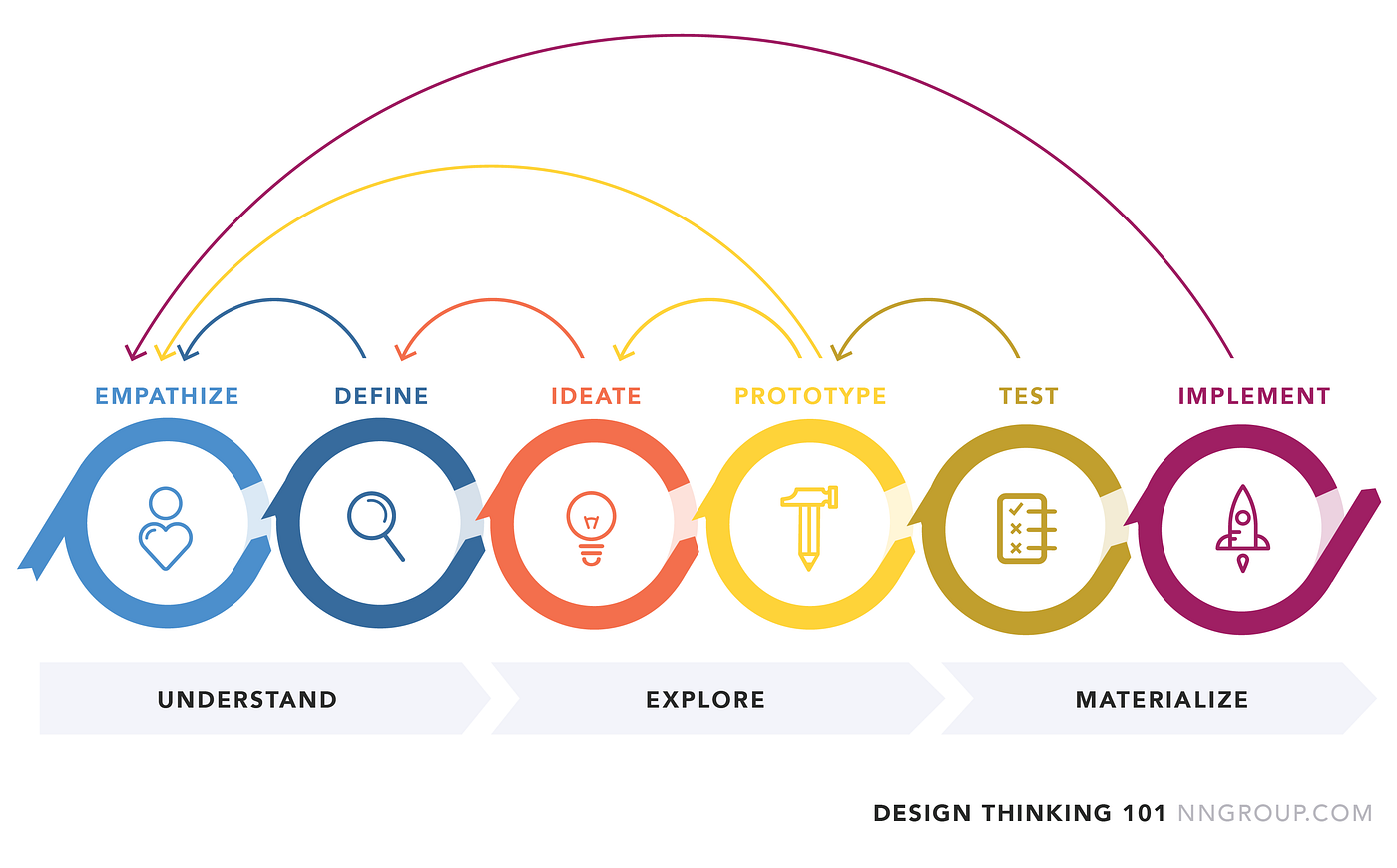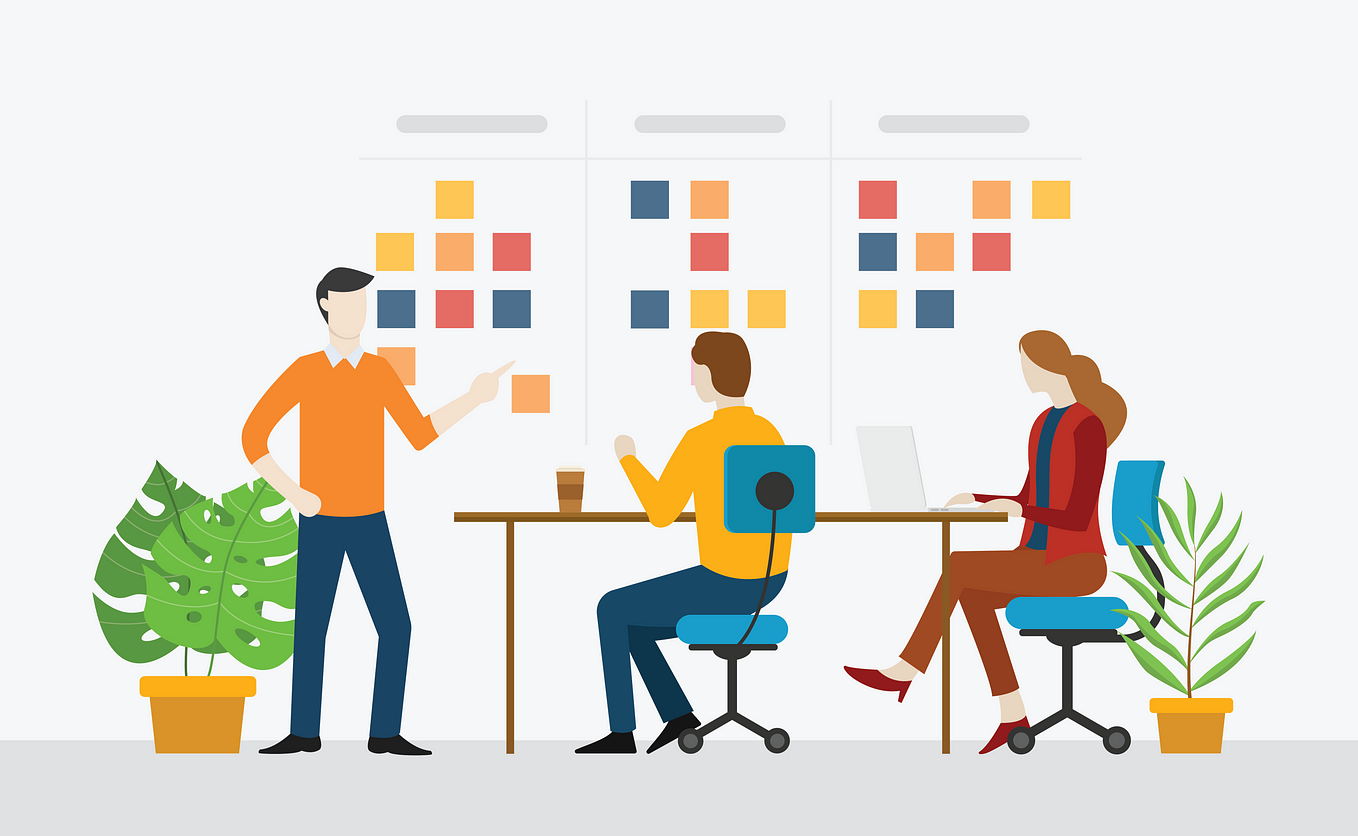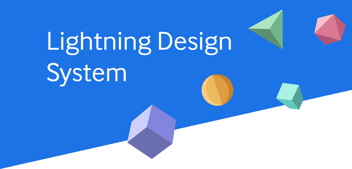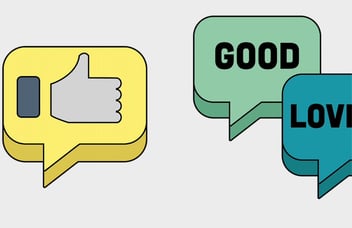Ever sat down to sketch out a blueprint for your dream home? If so, you've touched the edge of design thinking. Imagine harnessing that creative energy and using it not just to plan houses but also to build groundbreaking software through design workshops. Let's dive into it today.
We'll walk through every stage of design thinking—from empathizing with users' needs right up to testing prototypes. We'll explore how these steps can spark innovation in software development like nothing else can.
By the end, you’ll know how to prepare for and conduct a fruitful design workshop—think team huddles filled with buzzing ideas—and then put those insights into action post-workshop. But that’s not all...
You’ll also learn about overcoming challenges along the way because, let's face it, no process is perfect. Intrigued? Let's get started!
Table of Contents:
- Understanding Design Thinking
- The Process of Design Thinking
- Preparing for a Design Thinking Workshop
- Conducting a Design Thinking Workshop
- Post-Workshop Activities
- Advantages of Design Thinking in Software Development
- Case Studies of Successful Design Thinking Application in Software Development
- Overcoming Challenges in Implementing Design Thinking
- Conducting a Design Thinking Workshop
- FAQs in Relation to Design Workshop
- Conclusion
Understanding Design Thinking
Design thinking is a powerful design process that businesses use to solve complex problems and create user-centric solutions. At its heart, design thinking is about being able to put yourself in the shoes of users and grasping their needs thoroughly so that products can be created which offer genuine benefits.
The power of design thinking lies in its human-centered focus. This isn't just another buzzword but an actual mindset change for many companies. Instead of starting from the technology or business model angle, we begin by looking at people - what they need and how we can make their lives better.
This perspective shift doesn't come easy; it requires adopting a new set of principles anchored on empathy, collaboration, experimentation, and iterative learning. But when done right it leads to innovative solutions.
The Principles Behind Design Thinking
So let's dig deeper into these guiding principles:
- Empathy: Understanding the end-users' experiences first-hand is vital in creating meaningful designs. It allows us to see things from their perspective which helps us develop more tailored solutions.
- Ideation: The ideation stage promotes free-thinking where no idea is too wild or impossible because innovation often comes from unlikely places.
- Rapid Prototyping: We don’t wait until our solution is perfect before testing it out – we build prototypes quickly so we can learn fast and improve faster.
In practice, however, implementing these concepts requires discipline as well as flexibility but when you manage this balance you open up your organization’s capacity for true innovation.
Making Impact With Design Thinking
With design thinking, design studios are not just creating pretty interfaces; they're making a real impact, crafting solutions that resonate with user needs and business goals alike. We're helping companies innovate and compete in today's fast-paced digital landscape.
The outcomes of this approach can be game-changing. From improving customer experiences to driving business growth, the potential benefits of design thinking are vast as shown by Forbes.
Design thinking, with its human-centered focus, is more than just a buzzword. It's about empathizing with users and understanding their needs to create meaningful solutions. The design process isn't easy—it demands empathy, collaboration, experimentation and iterative learning—but when done right it can lead to innovative results that truly make an impact.
The Process of Design Thinking
Design thinking is a solution-oriented process that stimulates innovation. It's built around five core stages: Empathize, Define, Ideate, Prototype, and Test.

Empathize
The first step in design thinking is to empathize with the users you're designing for. This involves understanding their needs and experiences deeply. You do this by engaging with them directly through interviews or surveys. The goal? To get an authentic perspective on what they need from your software product.
Define
In the define stage, we analyze our user data to identify key problem areas we need to address in our software development project. Here's where we ask questions like "What are common challenges?" or "Where are there gaps in current solutions?" Our aim here isn't just about finding problems - it's about identifying opportunities for improvement too.
Ideate
This phase encourages free-thinking and creativity as teams brainstorm various solutions for identified issues. Creative techniques such as mind mapping can be used during this phase to explore multiple approaches before settling on one idea.
Prototype
A prototype brings ideas into reality but not quite final form yet. We create basic versions of the proposed solution which allows us to visualize how it might work when fully developed.
Test
Last but definitely not least is testing; arguably one of the most crucial steps in design thinking. In this stage usability testing is carried out to ensure the solution meets user needs. Feedback from users during this phase helps fine-tune the prototype, leading to a better final product.
The design thinking process isn't linear; teams often loop back to earlier stages based on feedback and insights gathered along the way. This iterative approach ensures that end solutions are truly user-centered.
Design thinking is a powerful, user-centered product design process to drive innovation in software development. It includes five core stages: Empathize with users, Define problem areas and opportunities, Ideate creative solutions, Prototype ideas into reality, and Test the solution for usability. This non-linear approach lets you loop back for improvements based on feedback gathered along the journey.
Preparing for a Design Thinking Workshop
Careful preparation is paramount for a successful design thinking workshop, but initiating the design workshop planning can be perplexing - where does one begin? The answer is straightforward: understand your goals, gather the right people, and create an inspiring environment.
Understanding Your Goals
The first step in preparing for a design thinking workshop is to clarify what you want to achieve. Are you looking to solve a specific problem or generate innovative ideas? Defining clear objectives will guide the entire product design process and keep everyone on track.
Gathering the Right People
You'll need diverse perspectives to fuel creative solutions. Invite participants from different areas of expertise who can bring unique insights into your session. Don't forget about including end-users—they're often overlooked but have valuable firsthand experience with the product or service.
Setting Up an Inspiring Environment
Create an open space that encourages collaboration and free-flowing thoughts—essentials of design thinking principles. Ensure there are plenty of materials like sticky notes, markers, whiteboards, etc., as they allow visual expression of ideas, making them more tangible and easier for others to grasp.
Remember these steps while preparing; it's not just about organizing logistics—it’s also setting up conditions that foster creativity, encourage risk-taking, and promote active participation.
Finally, make sure everyone understands how design thinking works before starting—this helps save time explaining during the actual session.
Conducting a Design Thinking Workshop
The first step in facilitating a successful design thinking workshop is to foster an environment of empathy. It's essential to understand the needs, thoughts, and feelings of your users before moving forward with software development. So, ask participants to place themselves in their user’s shoes.

Next up is defining the problem clearly and succinctly. Use this stage as an opportunity for participants to articulate their understanding of the user's need. A clear definition will guide all future ideation and prototyping stages.
In the third phase, we let our creative juices flow. Here you'll want everyone involved to brainstorm solutions, encouraging wild ideas that challenge traditional constraints.
- Create low-fidelity prototypes using simple materials like paper or digital wireframe tools during the fourth phase.
- This early version should capture key functionalities without getting lost in aesthetic details yet.
- Note: Prototypes don't have to be perfect; they're just a tool for testing concepts quickly.
In the final stage - Test - take these prototypes back into real-world settings for feedback from actual users. This helps refine designs based on direct input about what works well and what doesn’t so that developers can iterate effectively.
Post-Workshop Activities
Once your design thinking workshop wraps up, the real work begins. It's crucial to put those insights into action for effective software development.
Analyzing Insights Gained
Sift through the data obtained during the design workshop to identify key points. Make sure you understand what was discovered about users' needs and how these can be translated into practical solutions in your software product.
To do this effectively, you might want to use tools like Affinity Diagrams. These help sort ideas into themes or categories, making it easier to identify patterns and trends.

Making a Plan of Action
Next, you need a concrete plan that outlines steps towards developing your software solution based on user insights from the workshop. This could include features to develop, issues to fix or aspects of user experience that need improvement.
A useful tool for creating such plans is a Gantt chart, which lets you map out tasks over time and track progress as they are completed.
Keeping Communication Open
Last but not least - don't let those connections fade away. Keep communication channels open with all participants so everyone stays engaged in turning ideas from the workshop into reality within your new software product. Regular updates will make sure everyone feels part of this exciting journey.
Advantages of Design Thinking in Software Development
To stay ahead of the competition in software development, design studios often leverage a combination of technical proficiency and human-centered design thinking, which is essential for crafting user-centric solutions. Enter design thinking—a human-centered approach to innovation that draws from the designer's toolkit to integrate the needs of people, the possibilities of technology, and the requirements for business success.
Design thinking, with its focus on empathy for users' experiences and iterative problem-solving process, brings a plethora of benefits when applied in software development.
User-Centric Solutions
By starting with understanding user needs deeply—rather than jumping straight into coding—you can ensure you're building solutions that genuinely address user pain points. The result? More satisfied customers who love using your product because it makes their lives easier or better in some way.
Fostering Innovation
A critical aspect of design thinking is embracing ambiguity. This encourages out-of-the-box ideas leading to innovative solutions that could disrupt markets. After all, as Steve Jobs once said: "Innovation distinguishes between a leader and a follower."
Risk Reduction
In traditional software development methods like the waterfall model, there's often significant time investment before any product testing happens—which means higher risk if things go wrong. But with design thinking’s emphasis on prototyping early and frequently, you get immediate feedback enabling quick pivots where necessary—and thus reducing overall project risk.
So how does one tap into these benefits? That's where DePalma Studios comes in. Our design studio is here to assist you in utilizing design thinking as part of your software production techniques, so that you can construct more effective and user-friendly results.
Case Studies of Successful Design Thinking Applications in Software Development
The application of design thinking in software development has resulted in groundbreaking innovations and improved user experiences. Let's examine some noteworthy cases.
IBM: Pioneering Enterprise Design Thinking
IBM, one of the largest technology companies worldwide, is a pioneer in applying design thinking to its business operations. Realizing that having merely skilled engineers wasn't enough, IBM grasped the importance of people who could understand what users required and come up with imaginative answers.
To make this happen, IBM developed their own variant called 'Enterprise Design Thinking'. It enabled them to bring designers closer to their clients and stakeholders while ensuring consistent quality across all products. The result? An impressive increase in client satisfaction and team productivity.
Airbnb: From Near Failure To Billion-Dollar Success Story
A fascinating case study is Airbnb’s transformation from being on the brink of failure to becoming a billion-dollar company – thanks largely due to adopting design thinking strategies.
In 2009, Airbnb was close to bankruptcy until its founders decided it was time for an empathy-driven overhaul. They lived as guests themselves using their platform which led them understand what improvements were necessary for both hosts and visitors alike - thereby redesigning their service entirely based around customer experience.
PepsiCo: Shaping Corporate Culture through Human-Centered Approach
PepsiCo also embraced design thinking and made it an integral part of their corporate culture. By putting consumers at the center of product development, they were able to innovate new products that not only met but exceeded customer expectations.
This approach led to increased sales and market share for PepsiCo, demonstrating how design thinking can effectively drive business growth when applied strategically in software development processes.
Applying design thinking in software development can lead to innovative solutions and improved user experiences. Notable examples include IBM's 'Enterprise Design Thinking' that brought designers closer to clients, Airbnb's empathy-driven overhaul leading from near-bankruptcy to success, and PepsiCo's consumer-centered approach driving business growth.
Overcoming Challenges in Implementing Design Thinking
Implementing design thinking is not always a smooth sail. But don't fret. Let's address some common obstacles and offer practical solutions.

Tackling Resistance to Change
The unfamiliarity of the design thinking process can cause discomfort among team members, leading to resistance. A good start here is effective change management strategies. Encourage open dialogue about concerns and make sure everyone understands why this shift is beneficial.
Navigating Through Uncertainty
Design thinking involves venturing into unknown territories which might be daunting for some teams. Embrace uncertainty as an opportunity for innovation rather than a hurdle. As this research suggests, tolerating ambiguity fosters creativity.
Avoiding Paralysis by Analysis
In the ideation stage, over-analysis can lead to indecision or delay in progress - what we call 'paralysis by analysis'. To combat this, encourage swift decision-making based on customer empathy rather than exhaustive data analysis alone.
Fostering Cross-Functional Collaboration
Lack of cross-functional collaboration often poses a challenge during implementation of design thinking since it requires input from various departments within an organization. Breaking down silos through regular communication helps create more cohesive solutions that reflect diverse perspectives.
Remember: obstacles are not roadblocks but opportunities for growth. So, bring on the challenges.
Conducting a Design Thinking Workshop
The success of your software development project could hinge on how well you conduct a design thinking workshop. It's not just about gathering people in a room and brainstorming, but more about structured ideation that follows the five stages of design thinking: Empathize, Define, Ideate, Prototype, and Test.
Empathize
To start with empathy is to step into the shoes of your users. Conduct interviews or surveys to understand their needs and frustrations better.
You don't need mountains of data; sometimes small insights can lead to big ideas. Remember this isn’t an interrogation - it’s more like getting coffee with a friend where you’re curious about their experiences.
Define
In this stage, you take what you learned from the empathize phase and identify clear problems that need solving. This doesn't mean defining technical specifications or creating product features yet – instead focus on articulating user challenges as clearly as possible.
Ideate
This is where we allow creativity to run wild. Encourage participants to come up with solutions for defined problems without any constraints initially - no idea should be dismissed at this stage.
Leverage different brainstorming techniques, such as mind mapping or SCAMPER method (Substitute, Combine, Adapt, Modify/Magnify/Minify), for optimal results.
Prototype
Create low-cost, scaled-down versions of the product or specific features to investigate solutions and get user feedback. This could be paper sketches or digital wireframes – it’s about tangibility over beauty at this stage.
Test
Last but not least, validate your prototype with real users. Gather their reactions, ask questions and observe them using your solution. Make sure you’re ready for surprises - this is a learning experience more than anything else.
A well-executed design thinking workshop can transform how we develop software by putting people first in every step of the process.
Then, you generate a ton of creative solutions in the Ideate phase. The Prototype stage lets you create mock-ups or models of those solutions to visualize how they might work. Lastly, put your prototypes through rigorous tests in the Test phase and tweak as needed for an optimal outcome.
FAQs in Relation to Design Workshop

What does a design workshop do?
A design workshop sparks creative thinking and collaboration. It helps teams understand user needs, generate ideas, prototype solutions, and get valuable feedback.
How do I run a good design workshop?
To run an effective design workshop, prep well by setting clear goals. Foster open dialogue during the event. Finally, follow up with actionable steps based on insights gained.
What is the benefit of a design workshop?
The payoff of a design workshop includes innovative solutions to complex problems, better team alignment, and understanding of users' perspectives leading to more successful products.
How do you create a workshop design?
Create your own layout for workshops by first defining objectives. Next, plan activities that encourage interaction and idea sharing among participants, then ensure there's time allocated for reflection at the end.
Conclusion
So, you've journeyed through the landscape of design thinking and its potential in software development.
We started with understanding what this powerful problem-solving tool is. You got to explore its stages - Empathize, Define, Ideate, Prototype, Test - all critical parts of a successful design workshop.
You learned how to prepare for such workshops and facilitate them effectively. Remember: Post-workshop activities are just as important!
Of course, challenges may pop up when integrating design thinking into your processes. But now you have practical solutions at hand.
Your takeaway? Design thinking can revolutionize your software development process if applied correctly. So why wait? Get out there and start planning your first design workshop today!





